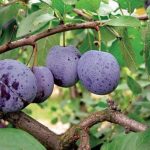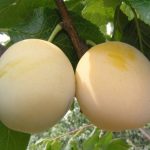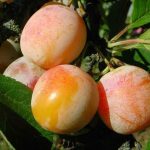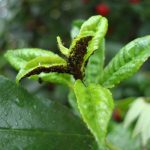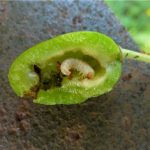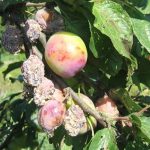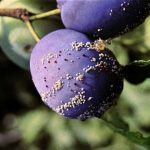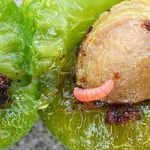Today we will talk about three varieties of plums: Morning, Yakhontovaya and Malakhovskaya. These varieties, as well as others, are characterized by various forms of roots, leaves, the appearance of fruits and many other factors. A detailed description can be found below.
Table of contents
History of breeding varieties
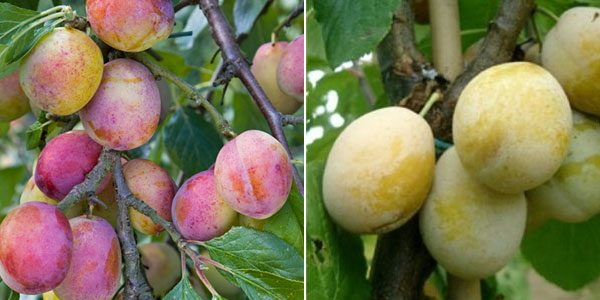
The history of the variety Morning Begins at the All-Russian Plant Breeding and Technological Institute of Horticulture and Nursery by crossing the variety Skorospelka Krasnaya and Renklod Ullensa. In turn, Yakhontovaya derived breeding Eurasia-21 and Smolinka. In the period 1971-2007 was Malakhovskaya plum is bred in Michurinsky garden among a number of others.
Description of varieties, advantages and disadvantages
Each gardener will be interested in the advantages and disadvantages of the variety before planting.
- The advantages of Morning include self-depletion (they do not form the ovary after pollination by pollen of flowers of its own variety), regular fruiting, fast ripening, resistance to pests and diseases. The disadvantages are much less: susceptibility to cold.
- Yakhontova advantages consider cold resistance, which allows it at times easier to endure winter (minus twenty-eight to thirty degrees of frost) than is given, for example, Utra, has high yields and the quality of the fruits themselves, bears fruit regularly on one-year growth, bouquet branches and spurs, large fruits , the bone is easily behind the fetus. Defects not detected.
- Malakhovskaya blue, like the previous variety, has good frost resistance, has high-quality fruits, which regularly abundantly pleases the tree of their owners. There are no flaws in the variety.
- Malakhovskaya plum
- Plum Morning
- Plum Yakhontovaya
Favorable landing regions
Favorable region for landing Morning is considered Central. Based on the foregoing, in areas such as Siberia, the cultivation of this variety is impossible. In the rest, it is approximately the same, which will be discussed further. For the other two varieties landing zone universalthat can not be called a plus.
Planting seedlings and further care of the plum
Morning
Saplings planted in early spring. Planted in a hole fifty-sixty centimeters deep and about eighty-ninety centimeters in diameter. Place for landing should be in direct sunlight. The most readily available fertilizer for this variety will be manure.. We take him fifteen kilograms. By no means fresh! Previously it is necessary to "process" on the fire. Here we add a pound of double superphosphate or one kilogram of ordinary, one hundred grams of potassium chloride or one kilogram of wood ash.
The soil should be loosened and moist. To get the crown, the owners must regularly prune your trees. This includes the removal of dead, frozen and branches that block the growth of others. The same is advised to do with the roots of other plants that are adjacent to a tree.
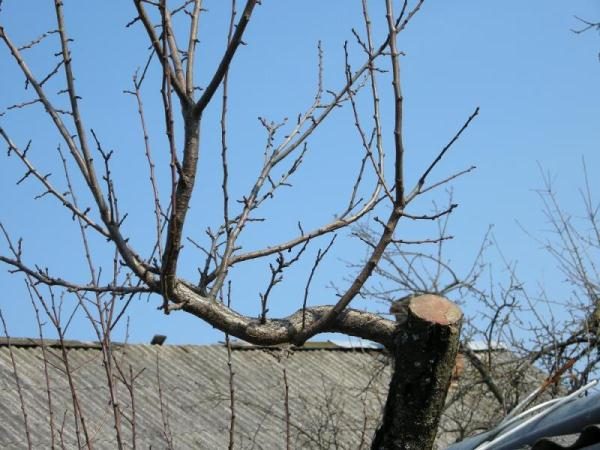
Do not forget about watering, Morning loves moisture, especially in the summer. Low trees up to two meters tall need three to four buckets weekly, and large ones require five to six buckets. Winter is the worst time for the variety. You can help the trees if you cover them with earth and shake the snow from the branches, trampling it at the roots.
Yakhontovaya
Also planted in early spring. Place for planting should be well lit, the groundwater level should be lower than one and a half meters from the level of the soil surface. It is necessary to dig a hole eighty to ninety centimeters wide and fifty to sixty centimeters deep (as for the previous variety).After that, place the seedling and fill it with a mixture of sod land with organic and mineral fertilizers. The ratio should be: fifteen kilograms of rotted manure (or compost), one kilogram of potassium chloride (or one kilogram of wood ash). Falling asleep all this, do not forget to shake the seedling and stamp the ground at the roots. The root neck, as recommended, should be at the level of three to five centimeters above the level of the soil. We dig a hole around our seedling and water it.
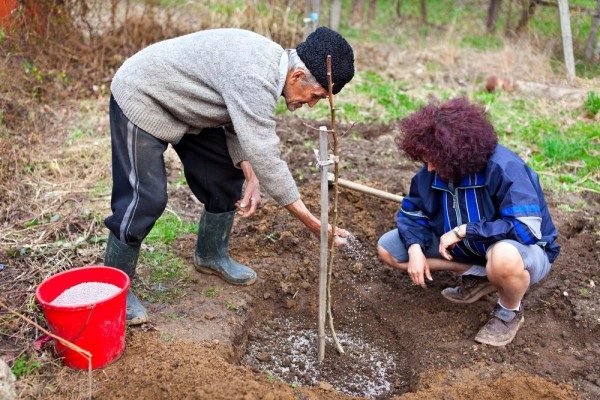
For irrigation will be enough one or two buckets of water. In order for the soil to retain moisture, it is treated with a solution of peat or humus. Is our the young tree needs to be tied to a wooden stakewhich we carefully install next to it on the north side so that the wind will not break the young plant.
Every year you need to fertilize the land with urea in the proportion of twenty grams per square meter, and after the plum begins to bear fruit, add ten to fifteen kilograms of rotted manure (compost), twenty-five grams of urea, two hundred grams of wood ash.Urea and nitrogen fertilizers should be used in the spring, and phosphate and potash fertilizers, respectively, in the autumn.
Sometimes slaked lime is used as a percentage of four to eight hundred grams per square meter. Looking after the plum, they create, approximately, such proportions: twenty-five to forty centimeters stem and crown, consisting of five to seven branches, placed the most beautiful and natural.
Periodically it is necessary to prune the branches, removing unnecessary forks, changing the direction of growth to get the desired result in the form of a crown. An important point worth noting is that after three or four years after entry into fruiting, remove the branch above the first upper well-developed lateral branch to get the crown in the form of a bowl. This is necessary to enrich the tree with enough sunlight. When cutting, remove all the knots.
Malakhovskaya
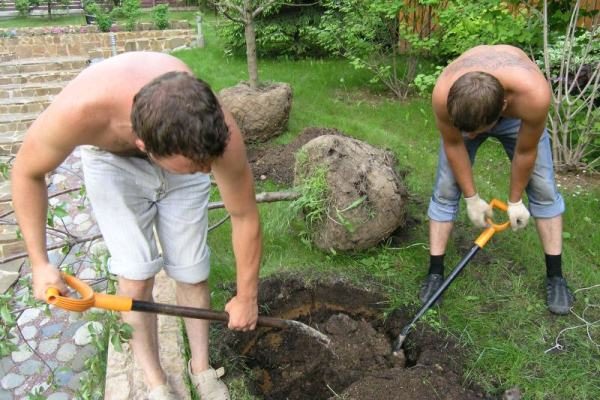
For planting this variety digging a pit sixty by sixty by sixty centimeters. There we pour one kilogram of superphosphate, a glass of slaked lime, two buckets of humus (three to four years of debate), mixing is prohibited.
A sapling is planted so that the package in which our sapling was, is equal to the ground level on the plot. Just as, and Yakhontovuyu bind sapling to the stake. For the care, it is advised to treat with hom, Bordeaux mixture, Horus, fast, Alatar, kinimix, inta-vir, feed up three years after planting with a fertika, azafoskoy, uniflora and others. Every year we process two to four hundred grams of hydrated lime, prune trees every year.
Reproduction plum
The process of reproduction in plums occurs in several ways:
- by planting seeds (for receiving saplings);
- inoculation: shoots for grafting buy or cut;
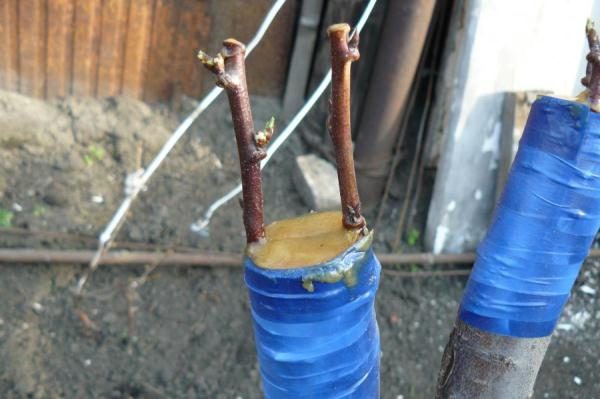
- root growth: we cut the root in the fall and plant it separately;
- root cuttings: digging up the roots at a distance of one and a half meters, in April they are planted under film, watered, and planted in the garden next winter.
Diseases and pests
Let's start with Morning. The variety is resistant to fruit rot, klyasterosporiozu. This grade is more prone to attack by such pests as aphid and moth. It is recommended to dig the soil under the crowns before buds bloom, cut and burn the branches affected by pests. If the same thing happened with the fruits - you need to destroy them, and then treat the trees with one-percent Bordeaux mixture or nitrafenom.
Yakhontovoy dangerous moniliosis, klestosporioz. From pests aphid, moth, sawfly. The recommendations are the same. In case you find “burnt” flowers, destroy the escape. I advise you to use drugs Iskra Bio and Inta-vir.
- Aphid
- Plum Saw Caterpillar
- Klestosporioz plums
- Monilioz
- Plum moth
Conclusion
From all the information that was given here, we can draw a brief conclusion. Of all three varieties, it is difficult to choose the most ideal in all moments: Morning does not tolerate cold, Yakhontovaya and Malakhovskaya exposed to various pests. It all depends on your preferences for the characteristics of the fruit, price and others, which we did not stipulate here. Do not forget about the timing of landing.When choosing a variety, consider also the specifics of your region, because it can be the final decision. I wish you success and a generous harvest.

